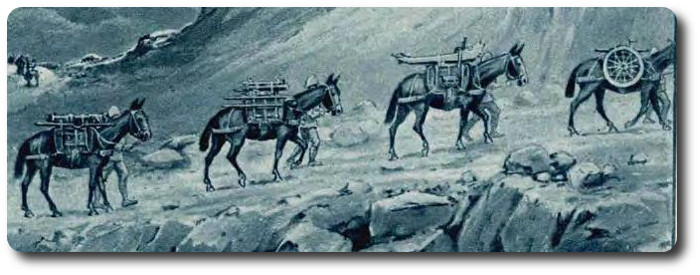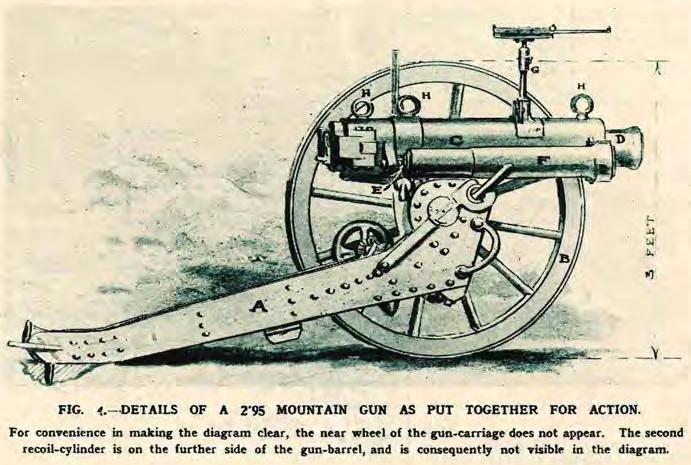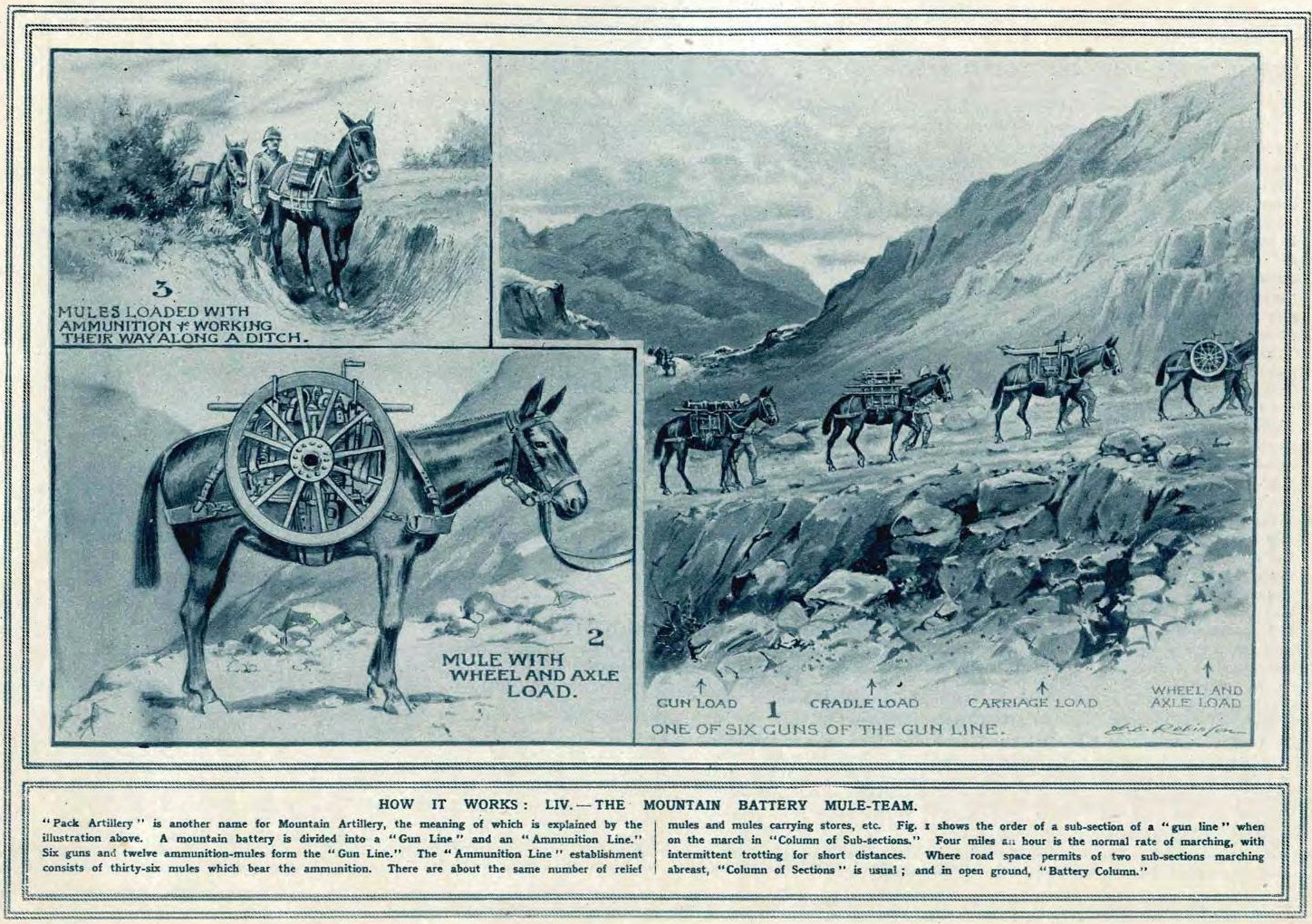Topic: Militaria

The Mountain Gun and Mule Team (1916)
The Illustrated War News, 2 February 1916
In mountainous districts where no roads exist it is impossible to use ordinary field artillery, simply because transport on wheels is out of the question. To meet this difficulty a light mountain-gun is used, this weapon being so designed that it can be rapidly taken to pieces and the individual parts loaded on the backs of a number of mules, varying from three, in the case of the smallest gun, to five in the larger types. The 2.95- inch q.f. mountain-gun may be taken as a good example (Figs. 1 and 4). In its case, one animal, known as the "gun-mule," carries the gun-barrel, or "chase," with its details; another, the "cradle-mule," carries the cradle, or frame, in which the gun rests when put together for action; a third animal, called the "carriage-mule," transports the gun-carriage, or trail; and the "wheel-and-axle-mule" completes the team, carrying those parts on its back (Figs. 1 and 2) . A gun carried in this manner can be rapidly conveyed over rough ground to otherwise inaccessible positions, and, if advantage be taken of available cover, it generally happens that the transport of the gun can be carried out with the minimum risk of discovery by the enemy. The gun and its parts and gear can be removed from the pack-saddles, put together, and made ready for action within the space of a minute.
A gun-mule, it is a curious fact, instinctively acquires special experience during his spell in the service of the battery, which extends in some cases over a period of twenty years, and that experience on the part of the animal adds considerably to the efficiency of the battery. A well-trained mule, for example, will always select the easiest path, and in climbing a stiff gradient will sometimes, if he can get hold of a convenient scrub bush or branch for the purpose, help to pull himself up by his teeth. Again, trusting to the gunners holding on to his tail as a brake, a trained mule will, without hesitation, slide down an incline of 45 degrees. When, with the 2.95-inch Q.F. Mountain Battery, the gun-mule carries a weight of 330 lb.; the cradle-mule, 300 lb.; the wheel-and-axle mule, 302 lb.; and the carriage-mule, 343 lb. These weights can be carried by the same animals all day if necessary, but it is usual to provide relief-mules, to which the loads can be transferred in half a minute as they trot up alongside for the purpose. A mule battery can often be very useful even in a level country, as it can be rapidly and secretly brought into action along a ditch (Fig. 3) or a foot-path through a plantation where such a course would be impracticable with a battery on wheels. In exceptional cases, when the mules cannot safely get up to a difficult position, the gunners themselves can turn to in their place and carry the various parts of each gun in a battery to the desired point, so as to come into action without delay.
When a battery is travelling by road, the guns are put together and their carriages fitted with a pair of shafts each, so that they can be drawn in the usual manner instead of being carried on the backs of the mules.

The 2.95 q.f. mountain-gun (Fig. 4) consists of a trail and carriage, (A) supported on its road wheels (B). Resting on the carriage is a cradle (C) in the form of a cylinder which encloses the gun-barrel, or "chase" (D). To the cradle (C) are attached a pair of piston-rods (E) which carry recoil-controlling pistons within the recoil cylinders. (F), the latter cylinders being rigidly fixed to the carriage (A). A column (G) is attached to the cradle (C) to carry the, "sight" of the gun. Eye-bolts (H H) are provided by means of which the "cradle" and the "chase" are secured to the pack-saddles for transport. In the Vickers-Maxim mountain-gun the trail is divided into three pieces, so that one or both of the after-parts can be removed when it is desired to use the gun in a cramped Position.
The shell fired by the British 2.95 q.f. gun weighs about 13 lb.; that of the Krupp gun of the same calibre, 14.3 lb. There is, in addition, a Krupp mountain-howitzer carried by twelve mules which weighs just over a ton and fires a 27-1b. shell.


